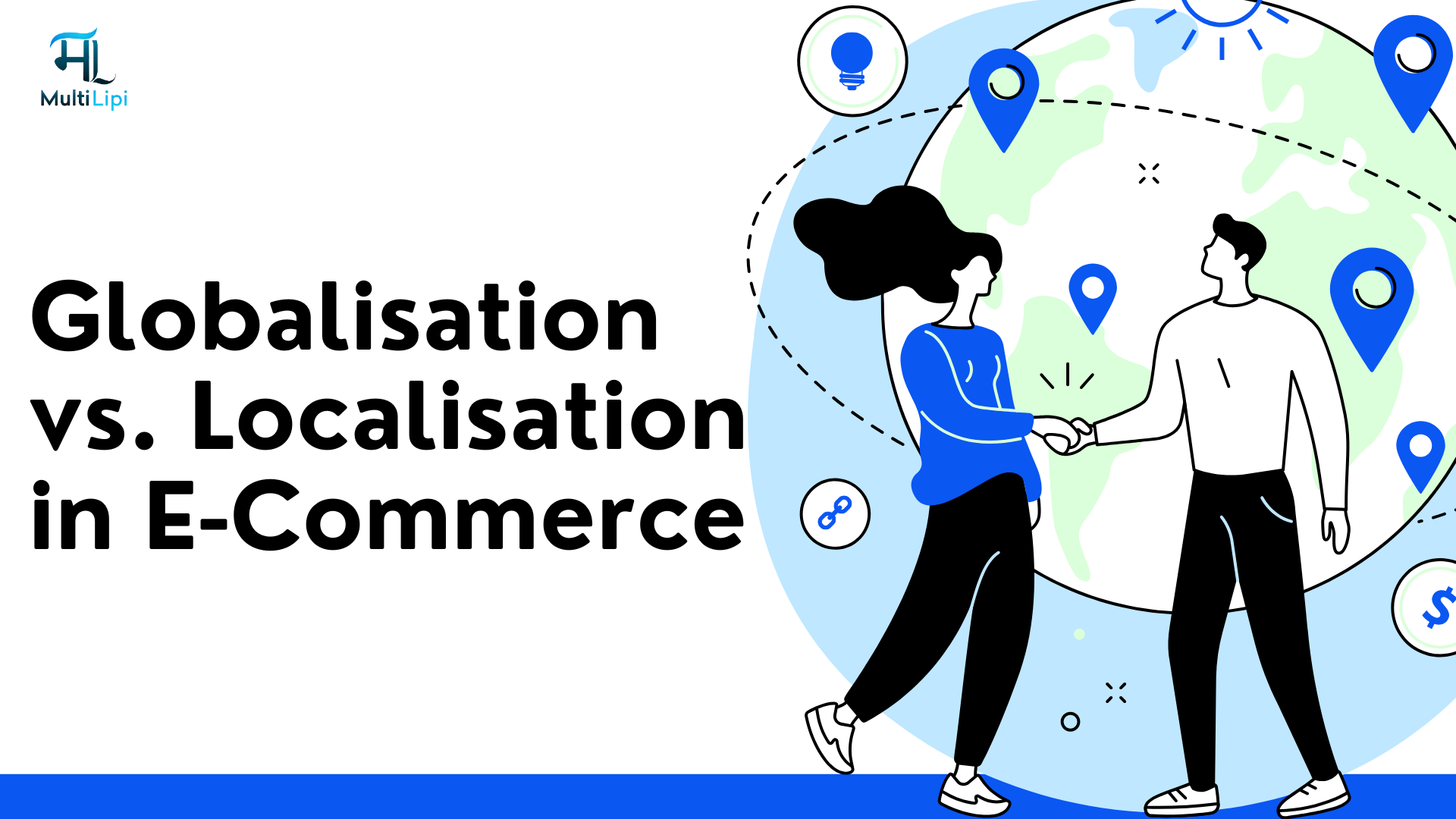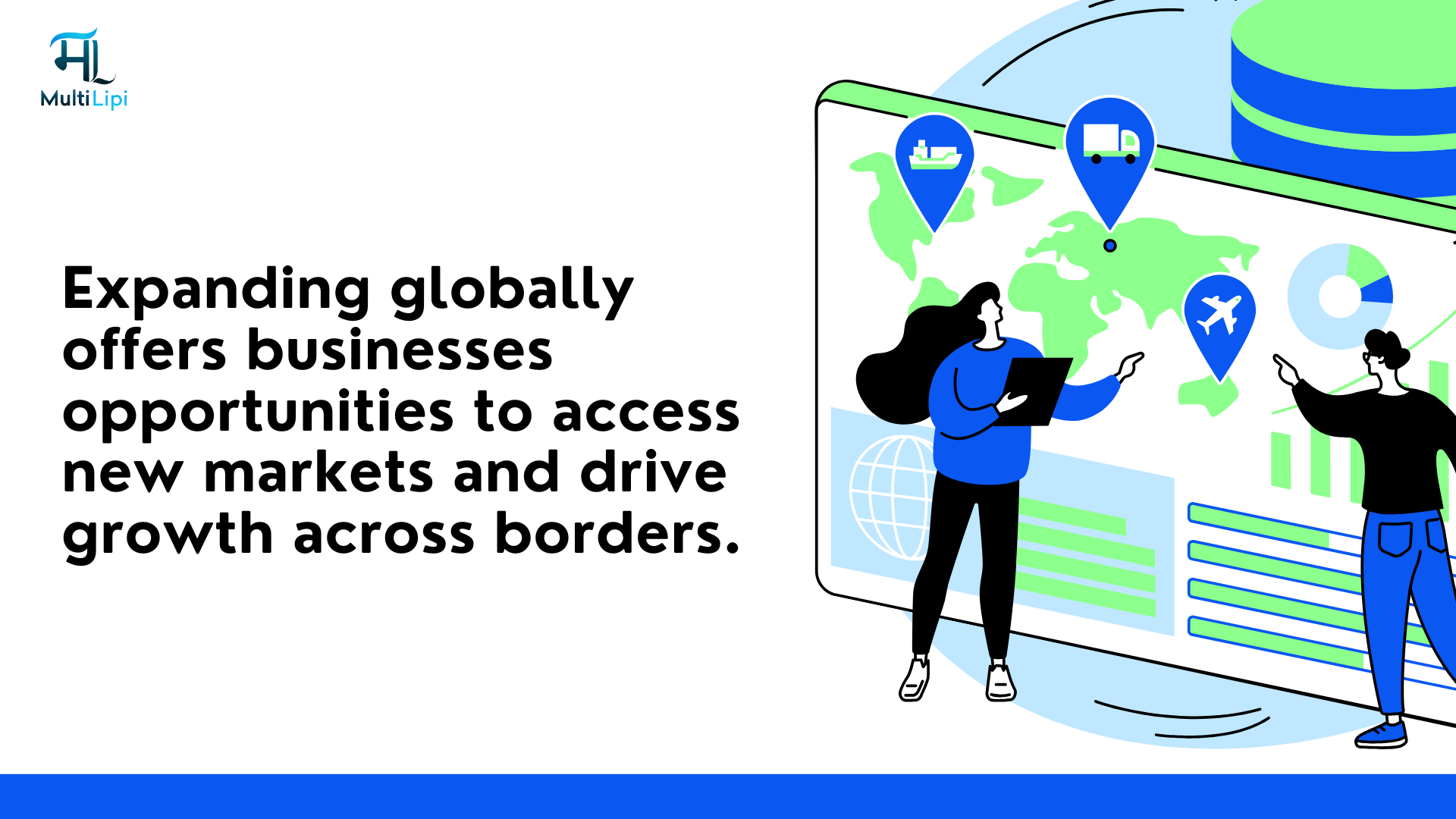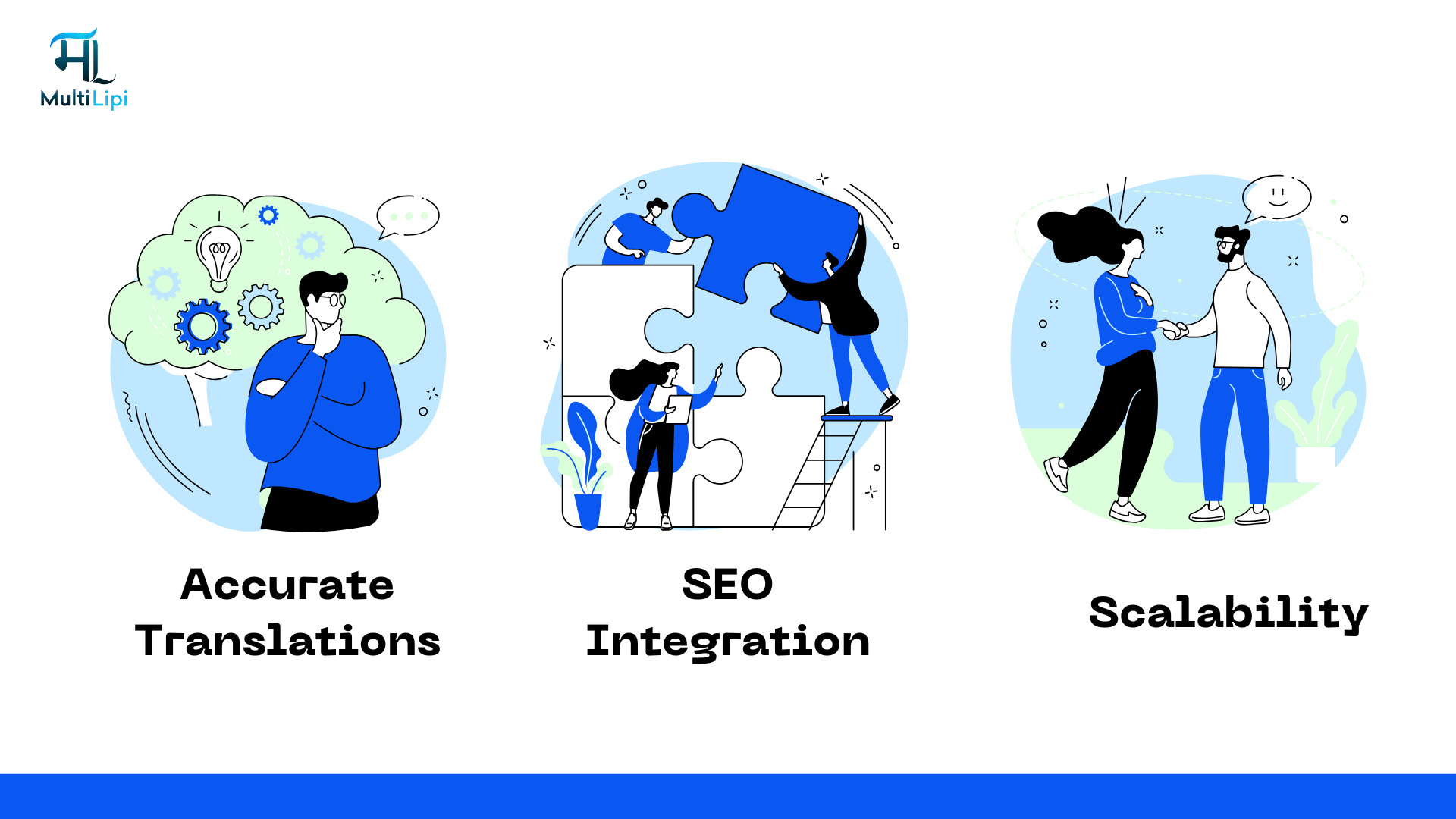Globalisation vs. Localisation in E-Commerce: A MultiLipi Perspective

In 2021, global e-commerce sales soared to $4.9 trillion, underscoring the sector's tremendous growth potential. However, success in e-commerce hinges not only on reaching international markets but also on implementing effective strategies to engage diverse audiences. This brings us to a vital discussion: globalisation vs. localisation.
Understanding the nuances of these two approaches is crucial for businesses striving to thrive in the global marketplace. While globalisation focuses on expanding a business’s reach across borders with a unified strategy, localisation tailors offerings to meet the specific cultural and linguistic preferences of local markets. This article delves into the differences between these strategies and how they complement each other, highlighting why businesses must leverage both to maximise their e-commerce potential.
What Is Globalisation?
Globalisation is the process of expanding operations across borders to create a unified global marketplace. By standardising products, services, and communications, businesses aim to tap into larger markets and drive economic growth. In e-commerce, globalisation involves creating a consistent brand presence while implementing scalable strategies to appeal to a broad international audience.
As reported by UNCTAD, global trade reached over $19 trillion in 2021, reinforcing the importance of adopting a global mindset. However, it is essential to balance globalisation with localisation to ensure relevance in diverse markets TranslatePress Reverie
What Is Localisation?
Localisation is the process of adapting products, services, and content to meet the unique cultural, linguistic, and regulatory needs of a specific market. This goes beyond mere translation; localisation considers elements like currency, payment methods, and visual design to align with local preferences.
According to TechTarget, effective localisation creates products that feel native to the target culture, enhancing user experience and boosting engagement. For example, aligning your e-commerce website with local expectations—such as using region-specific visuals or adapting language tone—can significantly increase conversion rates Ranking By SEO India
Globalisation vs. Localisation: Key Differences
· Definition:
- Globalisation: Focuses on expanding business operations globally through standardised offerings.
- Localisation: Adapts products or services to fit the cultural and linguistic preferences of specific local markets.
· Goals:
- Globalisation: Aims to create a unified global marketplace.
- Localisation: Seeks to enhance user experience by catering to local tastes and expectations.
· Target Audience:
- Globalisation: Appeals to a broad, international audience with uniform needs.
- Localisation: Targets specific local audiences with unique cultural and linguistic characteristics.
· Approach:
- Globalisation: Emphasises standardisation and economies of scale for efficiency.
- Localisation: Focuses on customisation to ensure cultural relevance and authenticity.
· Investment:
- Globalisation: Requires significant upfront investment in global infrastructure.
- Localisation: Is often more cost-effective initially but may require ongoing adjustments to meet local needs.
While globalisation provides the framework for market expansion, localisation ensures that businesses connect with their target audiences on a deeper level. Balancing these strategies is key to building strong relationships with international customers.

Challenges in Translation
Translation is central to localisation, but it comes with challenges that businesses must address to maintain accuracy and brand integrity:
- Maintaining Brand Consistency: Developing a unified style guide ensures that tone and messaging remain consistent across languages.
- Cultural Nuances: Engaging local experts helps avoid cultural missteps that could alienate audiences.
- Technical Accuracy: Collaborating with subject matter experts ensures that specialised terminology is accurately translated.
- Untranslatable Concepts: Using descriptive phrases can bridge gaps where direct translations fail Reverie Mars Translation
MultiLipi’s AI-powered translation tools overcome these challenges by combining neural machine translation (NMT) with human editing, ensuring that all content is accurate, culturally relevant, and SEO-optimised Oneupweb
The Relationship Between Globalisation and Localisation
Globalisation and localisation are interdependent strategies. While globalisation establishes a consistent brand identity, localisation tailors this identity to resonate with specific markets. Businesses that effectively balance these approaches can enhance both their global reach and local relevance TranslatePress
Real-World Examples
McDonald’s: Local Flavours with Global Reach
McDonald’s successfully combines globalisation with localisation by maintaining its brand identity while adapting its menu to local tastes. For instance, India’s McSpicy Paneer burger caters to vegetarian preferences, while Japan offers seasonal items like Green Tea Milkshake Ranking By SEO India
Netflix: Global Platform, Local Content
Netflix’s strategy includes global branding and localised content production. By creating region-specific series like Money Heist and offering multi-language subtitles, Netflix appeals to diverse audiences while maintaining a unified brand Reverie
Coca-Cola: Local Adaptations for Global Success
Coca-Cola adapts marketing campaigns and product offerings, such as unique flavours in Japan, while maintaining its global identity. These local adaptations enhance customer engagement Mars Translation
The Role of Technology
AI-driven tools like MultiLipi’s automatic website translation streamline localisation processes by offering:
- Fast Turnaround Times: Translating content almost instantaneously.
- Scalability: Managing large volumes of content across multiple languages.
- Integration with SEO: Ensuring translated content is search-engine optimised for local audiences TranslatePress Oneupweb
Benefits of Effective Localisation
- Improved Customer Satisfaction: By speaking the customer’s language, businesses foster trust and loyalty.
- Competitive Advantage: Localisation differentiates businesses, enhancing market relevance and increasing customer engagement.
Future Trends
- Cultural Adaptation: Increasing emphasis on tailoring content to local preferences.
- Collaborative Platforms: Streamlining feedback and translation processes.
How MultiLipi Can Help
MultiLipi offers a comprehensive localisation platform that combines AI-powered tools with human expertise to ensure:
- Accurate Translations: Context-aware translations tailored to local audiences.
- SEO Integration: Multilingual SEO ensures your site ranks high globally.
- Scalability: Easily manage translations across multiple languages TranslatePress Ranking By SEO India

FAQs
- Why is localisation important for e-commerce?
Localisation helps businesses connect with diverse audiences by tailoring content to meet cultural and linguistic expectations, boosting engagement and conversions. - How can MultiLipi streamline translation?
MultiLipi combines advanced AI tools with professional editing to deliver accurate, localised content. - What’s the difference between globalisation and localisation?
Globalisation focuses on creating a unified market, while localisation adapts offerings to resonate with specific regions.
By balancing globalisation and localisation, businesses can thrive in international markets. MultiLipi empowers companies to deliver tailored experiences that resonate with customers worldwide, ensuring both reach and relevance. Ready to expand globally? Let MultiLipi be your guide!

Comments